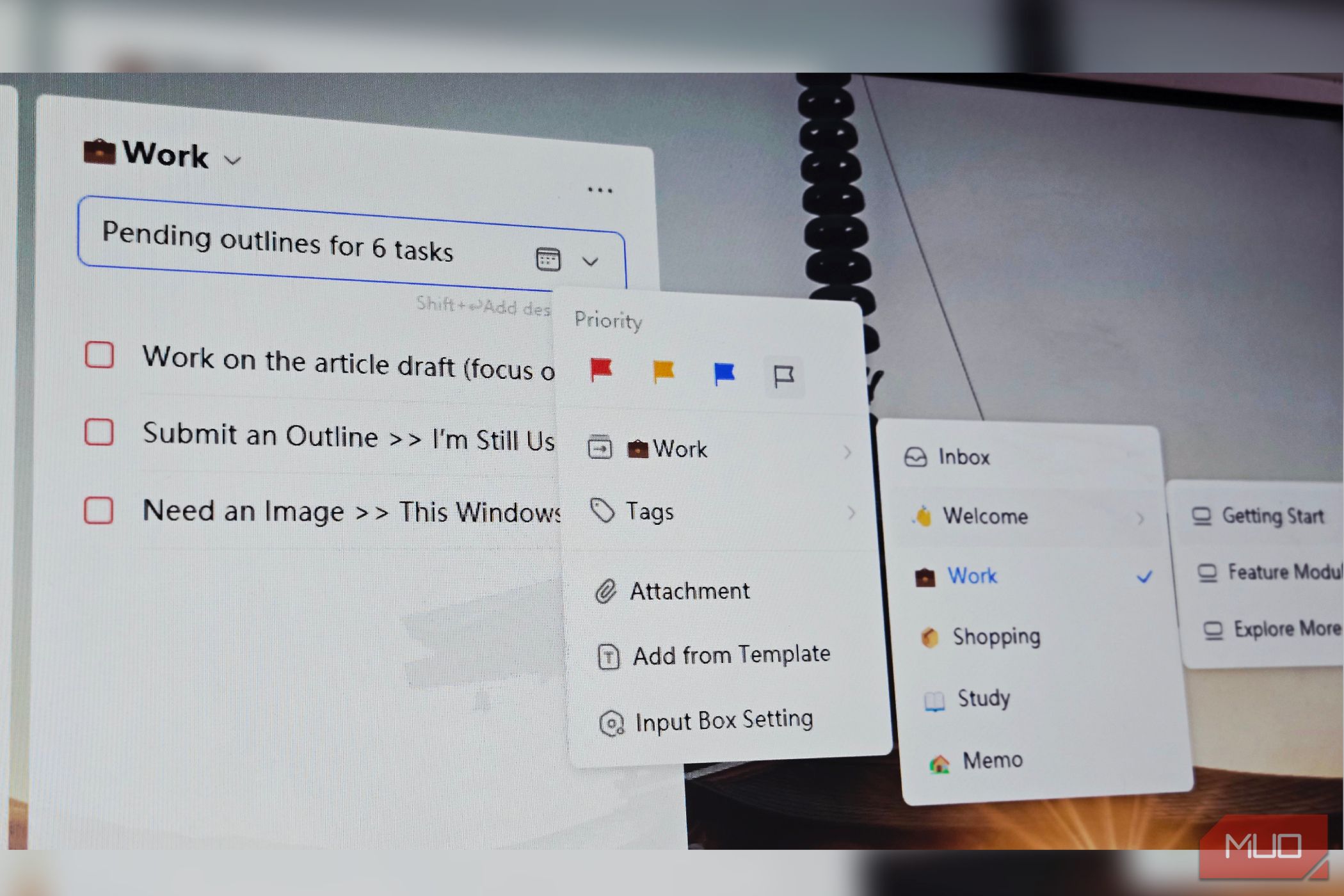Are your sales reps working 60-hour weeks, only for promising deals to vanish suddenly, leaving a pipeline that’s more fiction than forecast?
You’re not alone—this is the daily reality for sales leaders everywhere.
MEDDIC sales flips the script. It forces sales reps to verify key metrics, identify decision-makers, and validate the buying process before anything else.
For account executives tired of hearing “the timing isn’t right” after months of work and sales leaders weary of delays, MEDDIC sales filters genuine buyers before another quarter slips away.
In this guide, we’ll explain MEDDIC, why it works, and how your team can use it to close high-quality deals.
What Is the MEDDIC Sales Methodology and How to Implement It?
What Is MEDDIC Sales?
MEDDIC is a sales qualification framework that helps teams identify high-potential leads and improve closing rates. The acronym MEDDIC stands for metrics, economic buyer, decision criteria, decision process, identify pain, and champion.
Using this sales methodology, you’ll ask your prospects questions based on each element to find the ones worth pursuing. So, you focus on high-quality prospects, not potential red flags who will ghost you after months of effort.
Let’s go through each element in detail.
Metrics
Instead of listing all the benefits of your product, you want to identify the key metrics your customer wants to achieve. These can be ‘reducing manual workload by 15 hours per week’ or ‘reducing our customer response time by 20%.’
This helps demonstrate the ROI of your solution with specific case studies or benchmarks to justify investing in your product.
Economic buyer
Figure out who gets the final say in making the purchase, that is, who the economic buyer is. They are typically at the executive or C-level, such as a CEO, CFO, or VP of Operations.
Connecting with them early on gives you a head start; you get more information on what influences their buying decisions. It also helps you align your value proposition with their strategic priorities and goals, increasing your chances of a buy-in.
Decision criteria
Your customers also evaluate and compare your product based on different criteria. These include features, pricing, scalability, ease of implementation, customer support, and alignment with their strategic goals.
You can identify the deal breakers, objections, and potential gaps early on and address them to seal the deal. Understanding their evaluation process lets you tailor your pitch, highlight competitive advantages, and proactively remove roadblocks.
Decision process
Identify the steps the customer will take to evaluate, approve, and implement a solution. These could be internal reviews, stakeholder approvals, procurement processes, and timelines.
A clear understanding of your customer’s organization lets you pinpoint the exact touchpoints driving sales. When you align your sales cycle with their decision-making rhythm, you can anticipate delays and strategically engage the right people to push the deal.
Identify pain
Pain refers to the specific challenges, problems, or inefficiencies the customer is experiencing that your solution can address. You can utilize a user persona to map out the pain points and position your solution as the ideal fix.
Comprehending the real impact of pain points builds urgency and strengthens your pitch to decision-makers.
Champion
Find your champion, aka internal advocate, someone within the company who believes in your solution and can influence the decision-makers. They will inform you about the decision process and see that your solution is being pushed internally.
A strong champion also helps navigate internal politics, confirm key pain points, and create urgency. Their backing can turn a stalled deal into a closed one.
Here’s a handy guide to better understand how each component of the MEDDIC methodology applies to your sales process.
| Element | Sales process | Sample questions |
| Metrics | Quantifiable business outcomes that the customer hopes to achieve | What specific outcomes are you hoping to achieve? How do you measure success in this area? What KPIs are most important to your team? |
| Economic buyer | The person with the authority to approve the purchase | Who is responsible for budget decisions related to this solution? Have you made similar investments before? What factors influence the final decision? |
| Decision criteria | Understand the specific factors the prospect considers when evaluating solutions | What factors are most important to you when evaluating a solution? What would make a solution stand out to you? Are there any deal-breakers or must-have features? |
| Decision process | Map out the approval steps, stakeholders involved, and timeline for purchasing | What steps will you take to evaluate and approve this solution? Who else needs to be involved in the decision-making process? What is your expected timeline for making a decision? |
| Identify pain | The challenges or pain points your solution addresses | What challenges are you currently facing? What inefficiencies are impacting your team’s performance? What would happen if these issues aren’t resolved? |
| Champion | An internal advocate who supports your solution and influences decision-makers | Who in your organization would benefit most from this solution? Who else in your company supports this initiative? Would you be willing to introduce us to key stakeholders? |
While the MEDDIC sales methodology improves sales processes, two new variants, MEDDICC and MEDDPICC, have extra layers to accommodate more complex sales processes.
MEDDICC = MEDDIC + Competition
The ‘C’ here stands for competition. Who are you competing against? What are their strengths and weaknesses? How does your solution compare to them?
The answers to these questions are the direction you need to stand out with better positioning. Show how your offering outperforms competitors in areas that matter most to the customer.
MEDDPICC = MEDDICC + Paper Process
MEDDPICC takes MEDDICC further by adding the paper process as an eighth component.
The paper process refers to the formal steps to finalize a deal, including procurement approvals, legal reviews, contract negotiations, and compliance checks.
👀 Did You Know? The 80/20 rule (Pareto Principle) applies to sales, too. 80% of the revenue often comes from just 20% of customers. Focusing on high-value clients and using frameworks like MEDDIC to qualify leads is critical for driving growth!
⭐ Featured Template
Want a free template you can use—and customize—to map your MEDDIC sales process? Try the Customer Relationship Management (CRM) Template by . It adapts to your account and contact management system with room for custom data fields.
How to adapt for MEDDIC:
- Use ’s Custom Fields to log MEDDIC data per contact or account
- Use Docs or Whiteboards to brainstorm Decision Criteria or Pain Points collaboratively with your team
- Organize accounts using Lists or other Views grouped by MEDDIC qualification level
Why Sales Teams Should Use MEDDIC?
Your rep spent three months working a deal, only to find out the decision-maker was never in the conversation. Now, the budget’s gone, and the deal’s dead. Frustrating, right?
Here’s how adopting the MEDDIC sales process will help you qualify prospects to close deals:
- Win more deals by identifying qualified opportunities early and focusing on prospects most likely to buy
- Identify actual decision-makers immediately so you stop wasting time with people who can’t say ‘yes’
- Increase deal sizes by uncovering and quantifying the specific financial impact of your solution
- Spot and eliminate weak opportunities before wasting months on prospects who have no intention of buying
- Precisely map complex buying committees by identifying each stakeholder’s role and influence
- Craft proposals that resonate by directly addressing key business outcomes buyers care about
- Onboard new salespeople faster with proper sales enablement and a clear, replicable qualification system
- Outmaneuver competitors by understanding exactly how decisions are made and what criteria matter most
- Create a consistent sales approach that delivers predictable results across your entire sales team
💡 Pro Tip: Use MEDDIC as a deal disqualification tool, not just as a sales qualification methodology. If a prospect doesn’t have a clear economic buyer, measurable metrics, or a champion, it’s better to walk away early and focus on opportunities with a higher chance of closing.
Implementing MEDDIC in Your Sales Process
Knowing about MEDDIC is one thing; making it part of your sales process is another. Now, let’s see how you can implement the MEDDIC sales framework in a few steps:
Step #1: Clearly define your buyer personas
You can’t qualify deals effectively if you don’t know who you’re selling to. Begin by creating detailed profiles of your ideal customers, focusing specifically on decision-making roles within target organizations.
Understand their goals, challenges, and buying triggers to tailor your outreach. The more clearly you define these roles, the easier it is to align yourself with their expectations.
You should:
- Identify economic buyers, champions, and key decision-makers—like a CFO as the buyer and an IT director as your champion
- Document their pain points and key metrics. Are they focused on cutting costs, boosting efficiency, or reducing risk?
- Map their role so reps know when to engage and can anticipate late-stage roadblocks
💡 Pro Tip: Start your MEDDIC implementation with the User Persona Template in . This template gives you a structured layout to capture key details like job title, responsibilities, goals, pain points, tools used, and buying objections—all of which map directly to MEDDIC elements like Metrics, Pain, and Decision Criteria. You can use Custom Fields to track persona-specific data and tags to group personas by industry or segment.
Step #2: Set the qualification process with MEDDIC
Your team needs a clear, structured approach to MEDDIC. Otherwise, reps will apply it inconsistently, and bad deals will slip through.
- You must define what ‘qualified’ looks like at each sales pipeline stage
- Reps should avoid pushing deals forward without documented decision criteria, a verified champion, or a clear pain point
- Then, equip sales reps with targeted questions to prioritize leads. Instead of “Do you have a budget?”, they should ask, “Who typically approves purchases of this size, and what’s their process?”
- Next, establish when these questions should be asked. If reps aren’t identifying the economic buyer early, they risk wasting months on a non-decision-maker.
Step #3: Train your sales team
You can’t just hand your reps the MEDDIC framework and expect them to figure it out. They need hands-on training that makes applying it second nature.
Here are a few ways to do this:
- Run role-playing exercises where reps practice real customer scenarios. For example, have them qualify a deal and identify the economic buyer while a manager plays the prospect
- Give them question frameworks so they’re never stuck on a call. Instead of a vague “Who makes the final decision?”, they’ll know to ask, “When was the last time your team purchased a similar solution? How did that process work?”
- Set clear sales KPIs to track how well reps identify key decision-makers, uncover pain points, and move deals forward
Reps improve through practice, not theory. Reinforce this with weekly deal reviews, call breakdowns, and peer coaching.
Step #4: Use a CRM to track MEDDIC data
If your reps aren’t logging MEDDIC details, they’re guessing their way through deals. That’s a problem. Your CRM software should act as a real-time deal qualification engine, not just a place to store contact info.
Build custom fields for each MEDDIC element. Ideally, reps should be able to push a deal forward only after documenting the economic buyer, decision process, and champion’s influence.
You must also develop dashboards showing MEDDIC completion rates across your pipeline and sales reports, correlating MEDDIC completion with win rates.
Step #5: Review and optimize
MEDDIC is only effective when teams refine their approach based on accurate data. Reviewing and optimizing the process ensures deals are qualified correctly and sales performance improves over time.
Here’s how to do this in practice:
- Hold structured deal reviews: Challenge reps on how they validate economic buyers and decision criteria
- Analyze MEDDIC data vs. deal outcomes: Identify which elements drive wins and adjust training accordingly
- Address execution gaps: Coach reps on weak areas like uncovering pain points or engaging economic buyers
- Refine qualification processes: Use past deal insights to improve CRM workflows and sales playbooks
👀 Did You Know? In the late 1800s, John H. Patterson, founder of National Cash Register (NCR), introduced the first formal sales training program. His methods laid the foundation for modern sales training and transformed how sales organizations structure training and development processes.
Real examples of MEDDIC sales methodology in action
1. Fastmarkets
Fastmarkets needed to revamp its sales strategy after shifting to a data licensing model. Instead of waiting months to build a team, they hired external experts to embed the MEDDIC sales methodology fast.
Through hands-on workshops, they refined opportunity qualification and sales competencies, ensuring reps focused on high-value deals. The impact?
- 147% jump in cross-sell revenue by targeting the right buyers
- 24% higher AOV with value-driven selling
- 47% drop in churn, proving substantial deals last
- 14% better forecast accuracy, making sales more predictable
Fastmarkets turned a sales shake-up into serious growth by tightening its sales process.
2. PTC (Parametric Technology Corporation)
PTC (Parametric Technology Corporation) faced a critical challenge in the 1990s: scaling its sales operations to meet the demands of a rapidly growing market.
As PTC moved into enterprise software sales, it needed a structured way to qualify high-value deals and streamline its process.
To tackle this, PTC brought in Jack Napoli and Dick Dunkel who then created MEDDIC to revamp sales training and onboarding. With this framework:
- PTC grew from $300 million to $1 billion in revenue within just four years
- The company achieved 40 consecutive quarters of double-digit growth
Such impactful results made the MEDDIC methodology the go-to qualification framework for B2B sales teams.
👀 Did You Know? Sales reps spend only 30% of their working time on selling, while the remaining 70% is consumed by administrative tasks, internal meetings, generating quotes, and researching prospects.
How Helps Implement MEDDIC in Sales
Sales professionals struggle with scattered qualification data, limited visibility into deal progress, and time-consuming manual updates. CRMs store data, but they rarely enforce MEDDIC.
addresses this by offering a comprehensive AI-powered toolset that helps sales teams apply the MEDDIC framework. This positions as the everything app for sales teams.
Centralize qualification data with CRM
Critical information about economic buyers, decision criteria, and pain points ends up buried in email threads, call notes, or worse—your rep’s head. To effectively adopt the MEDDIC sales methodology, you can use CRM as a centralized repository.


Here’s how you can do it:
- Create Custom Fields to capture specific MEDDIC criteria, like economic buyer details or ROI calculations for your prospect
- Utilize customizable views like List, Kanban Board, and Table to monitor the progression of deals through each MEDDIC stage
- Implement Automations to trigger specific actions based on MEDDIC criteria, for example:
- When the “Economic Buyer” custom field is updated, automatically assign a task to the account executive to schedule a decision-maker call
- If the “Champion” field is left blank after a deal moves to a certain pipeline stage, trigger a reminder task or comment tag to prompt the rep to identify one
- Set up a status change automation to move deals to “Qualified” once all MEDDIC fields are completed
- Use automated comments or checklists to guide reps through the next best action based on what MEDDIC criteria are missing
Watch this quick explainer to learn more about Automations:
also offers customizable CRM templates for deal tracking. These templates centralize data, streamline workflows, and ensure that all critical sales information is organized effectively.


Here are some ready-to-use templates in that support the MEDDIC process:
Track progress with Dashboards


Dashboards give sales teams a real-time view of pipelines, performance, and key metrics. They transform qualification data into actionable visualizations to:
- Monitor sales performance with customizable charts and widgets
- Visualize the ROI of your solution on potential buyers
- Track decision timelines and approvals
These insights in your sales dashboard reveal coaching needs and resource priorities based on actual qualification data, not a gut feeling.
Collaborate using Tasks


One of the biggest challenges in implementing MEDDIC is ensuring sales reps consistently document key deal details before moving opportunities forward.
Without a structured process, important information (like decision criteria or the economic buyer) can be overlooked, leading to poorly qualified deals.
With Tasks, you can centralize task management to keep MEDDIC adherence on track. Break down the sales process into smaller, actionable tasks:
- Create Custom Fields for recording metrics, economic buyer, decision criteria, and more, ensuring reps document critical deal details before advancing opportunities
- Set up rules that prevent deals from moving forward unless MEDDIC criteria are met
- Use List, Board, or Gantt views to monitor how well opportunities align with MEDDIC
📮 Insight: 92% of knowledge workers risk losing important decisions scattered across chat, email, and spreadsheets. Without a unified system for capturing and tracking decisions, critical business insights get lost in the digital noise.
With ’s Task Management capabilities, you never have to worry about this. Create tasks from chat, task comments, docs, and emails with a single click!
Prompt communication with Chat
Chat and work often exist in silos, making it easy for critical MEDDIC details to get lost in endless back-and-forth messages. When sales teams have to dig through chats to find key decision criteria or buyer pain points, deals slow down, or worse, opportunities slip away.


Chat bridges this gap by integrating chat directly with your MEDDIC workflow:
- Instantly turn messages into tasks for tracking essential deal details
- Keep every conversation linked to relevant tasks, docs, and follow-ups, ensuring nothing is missed
- Initiate one-click voice and video calls using SyncUps. You can record them and auto-generate summaries and action items using Brain, ’s native AI assistant
Integrate your current tech stack with


Scattered data, fragmented information, and back-and-forth tool switching can make the MEDDIC process tedious. Integrations connect 1000+ CRM systems, email platforms, and other sales tools to ensure you have all you want in one place.
You can connect your sales tech stack to:
- Pull live sales data from CRM, spreadsheets, and analytics tools, providing real-time visibility into MEDDIC metrics
- Store decision criteria directly within Docs, keeping it linked to each deal so reps never lose track of what matters to the buyer
- Connect with support tools (Intercom, Help Scout) to flag customer issues and sync pain points directly to sales deals
- Use ’s AI Notetaker to log and transcribe every interaction with your champion so the entire team stays aligned on engagement strategy
Here’s what our customer, Alexander Haywood, CTO of Liquid Barcodes, has to say about using :
MEDDIC vs. Other Sales Methodologies
Choosing the right sales methodology can make all the difference in closing high-value deals. While MEDDIC focuses on rigorous qualification, other frameworks prioritize different aspects of the sales process.
Here’s a side-by-side look at how MEDDIC compares to other sales methodologies:
| Methodology | Primary focus | Key strength | Key limitation | Implementation complexity |
| MEDDIC | Qualification | Structured approach to qualifying high-value opportunities | Primarily focused on qualification rather than the entire sales process | Medium |
| SPIN selling | Discovery | An effective questioning framework to uncover needs | Less structured approach to overall deal qualification | Low |
| Challenger sale | Positioning | Disrupting customer thinking with new perspectives | Requires high seller business acumen and preparation | High |
| Solution selling | Problem-solving | Connecting solutions to specific customer problems | Can be time-intensive to implement fully | Medium-High |
| BANT | Basic qualification | Simple, easy-to-remember qualification criteria | Often too simplistic for complex enterprise deals | Low |
| Sandler selling | Buyer-seller dynamics | Balanced approach to buyer-seller relationships | Heavy emphasis on psychology requires substantial training | High |
| Value selling | ROI justification | Quantifying the business impact of solutions | Highly dependent on customer financial data availability | Medium |
| Target account selling | Account strategy | Comprehensive account mapping and planning | Complex methodology with significant documentation | Very High |
| Miller Heiman strategic selling | Complex deal navigation | Detailed stakeholder mapping and influence strategy | Requires significant time investment to implement properly | High |
| Conceptual selling | Understanding the buyer perspective | Focuses on understanding customer concepts and perceptions | Less prescriptive on qualification criteria | Medium |
🧠 Fun Fact: Joe Girard, recognized by the Guinness Book of World Records as the world’s greatest salesperson, sold 13,001 cars in 15 years. That’s an average of 6 cars per day!
Adopt MEDDIC with and Close Every Deal!
86% of B2B purchases stall during the buying process. That’s a huge number of unqualified leads in your sales funnel. The MEDDIC sales methodology can prevent this, but only if you apply it consistently throughout the process.
That’s where is your ally.
With it, you can centralize MEDDIC data, automate qualification workflows, and keep every deal transparent. No more scattered information—just a single, organized system that helps your team qualify leads into your sales funnel with precision.
Use ’s CRM templates and dashboards to structure your sales process, track qualification steps, and close high-quality deals.
So, are you ready to ditch unqualified prospects and drive predictable revenue? Implement the MEDDIC process with to stay proactive and data-driven. Refine your sales approach, remove bottlenecks, and grow revenue with confidence.
Get started with today!


Everything you need to stay organized and get work done.













